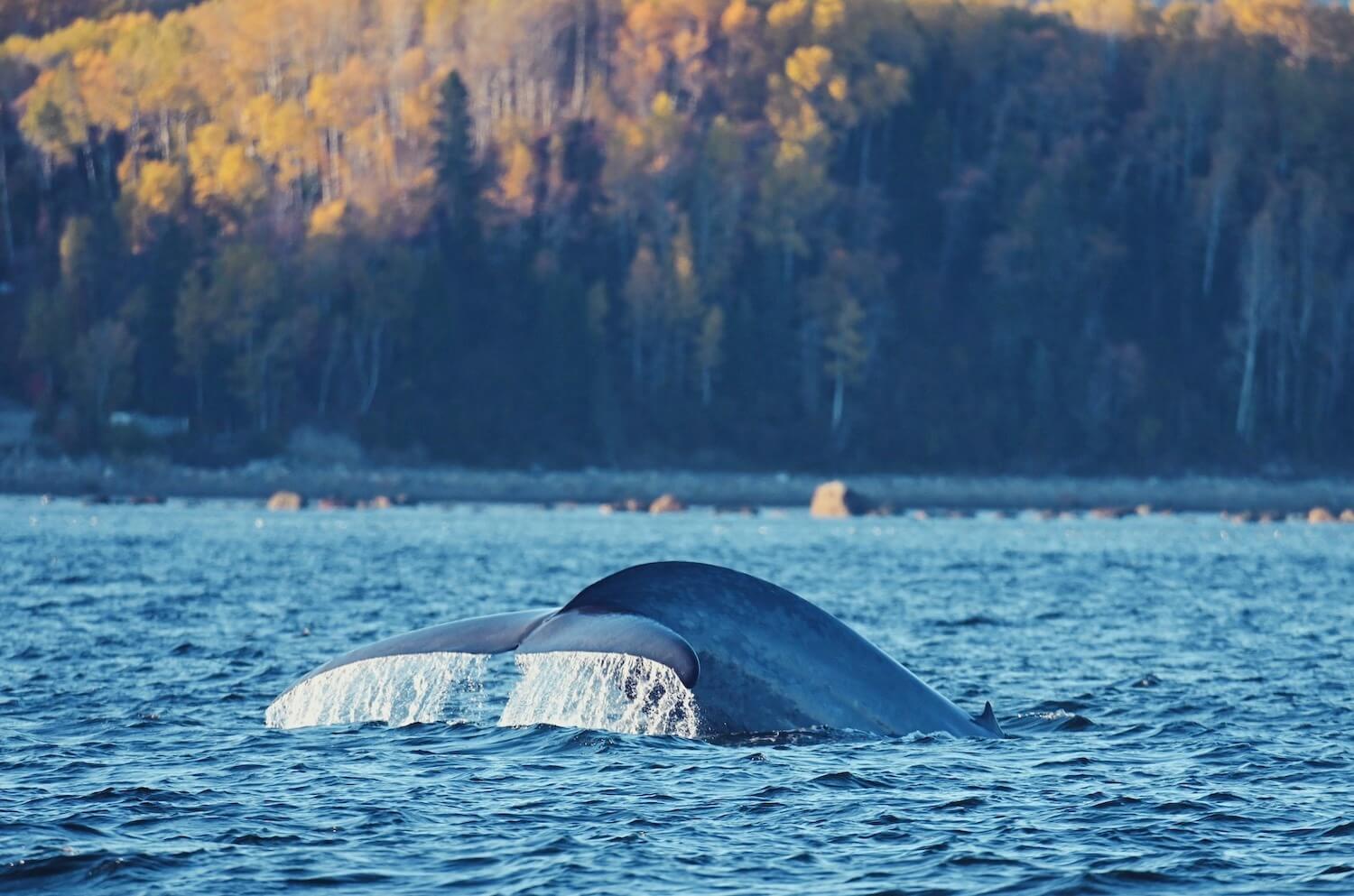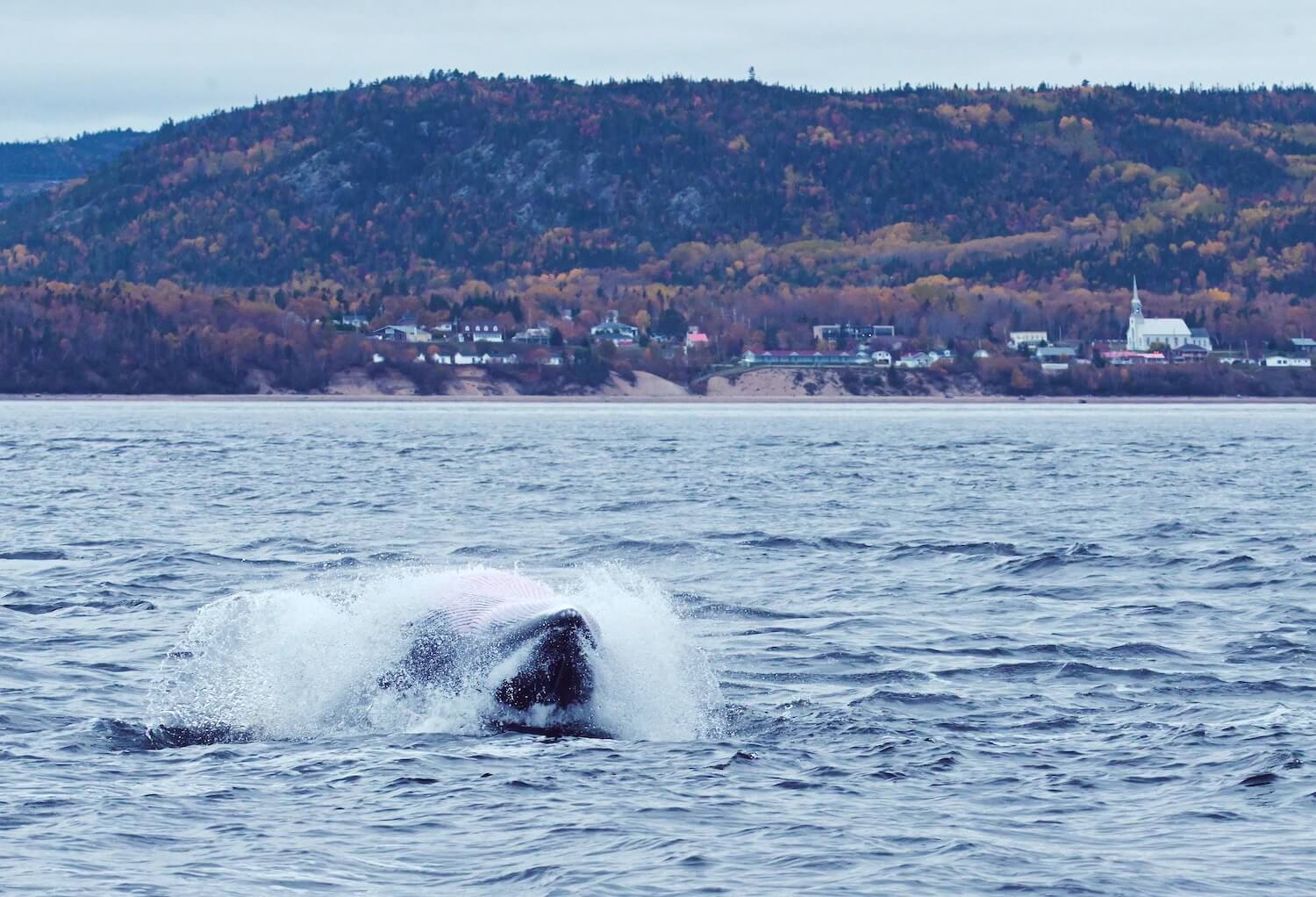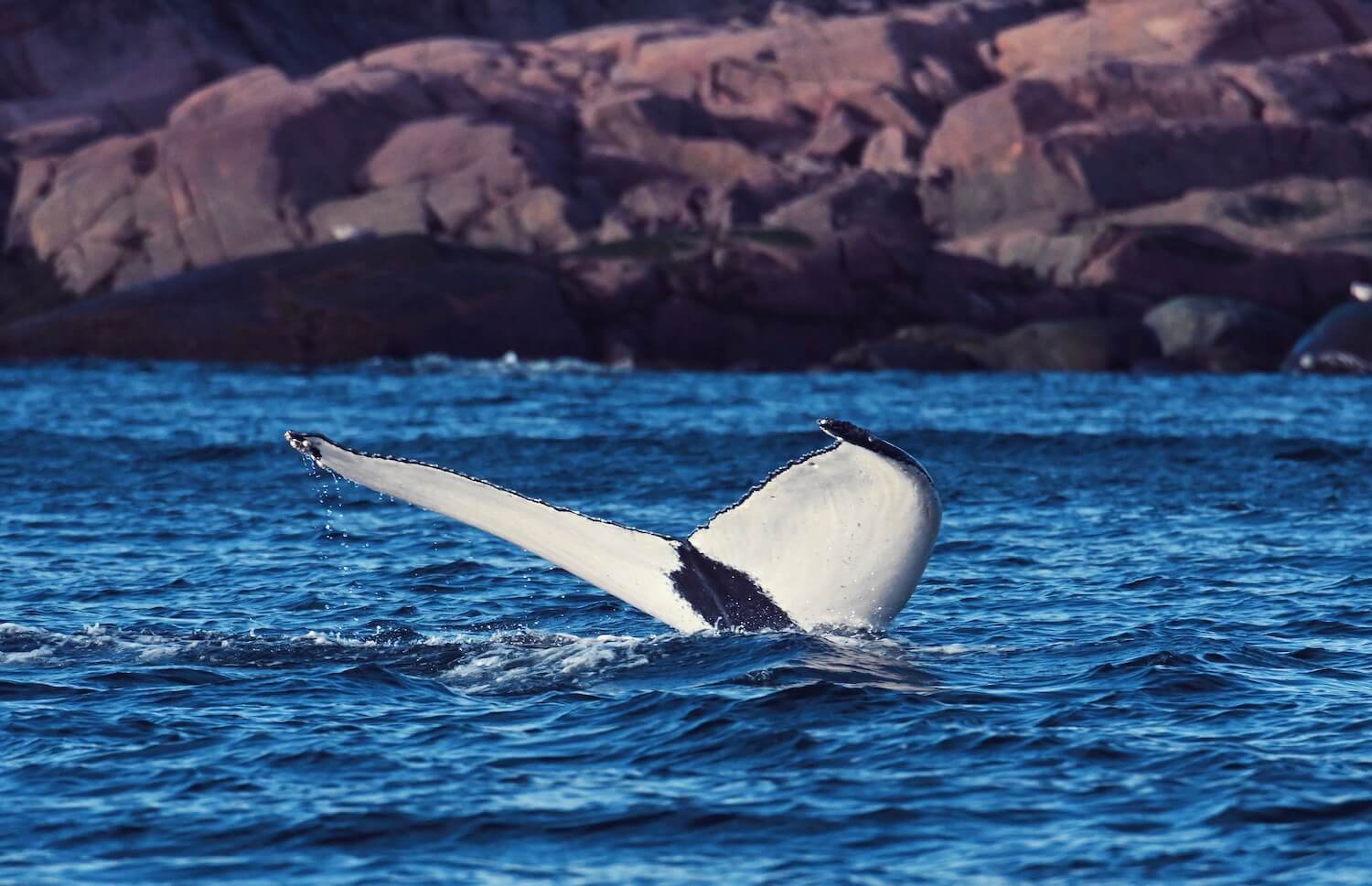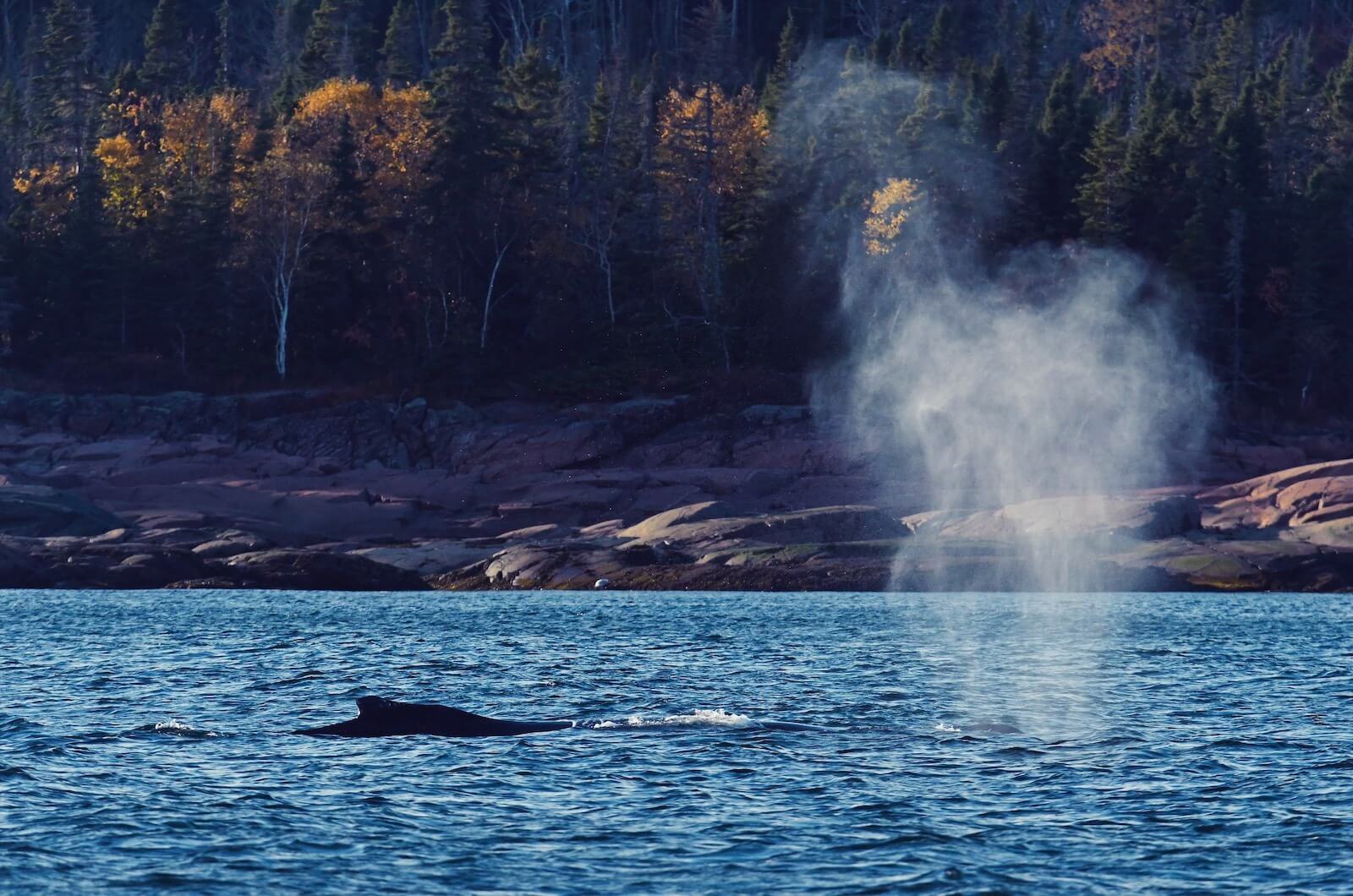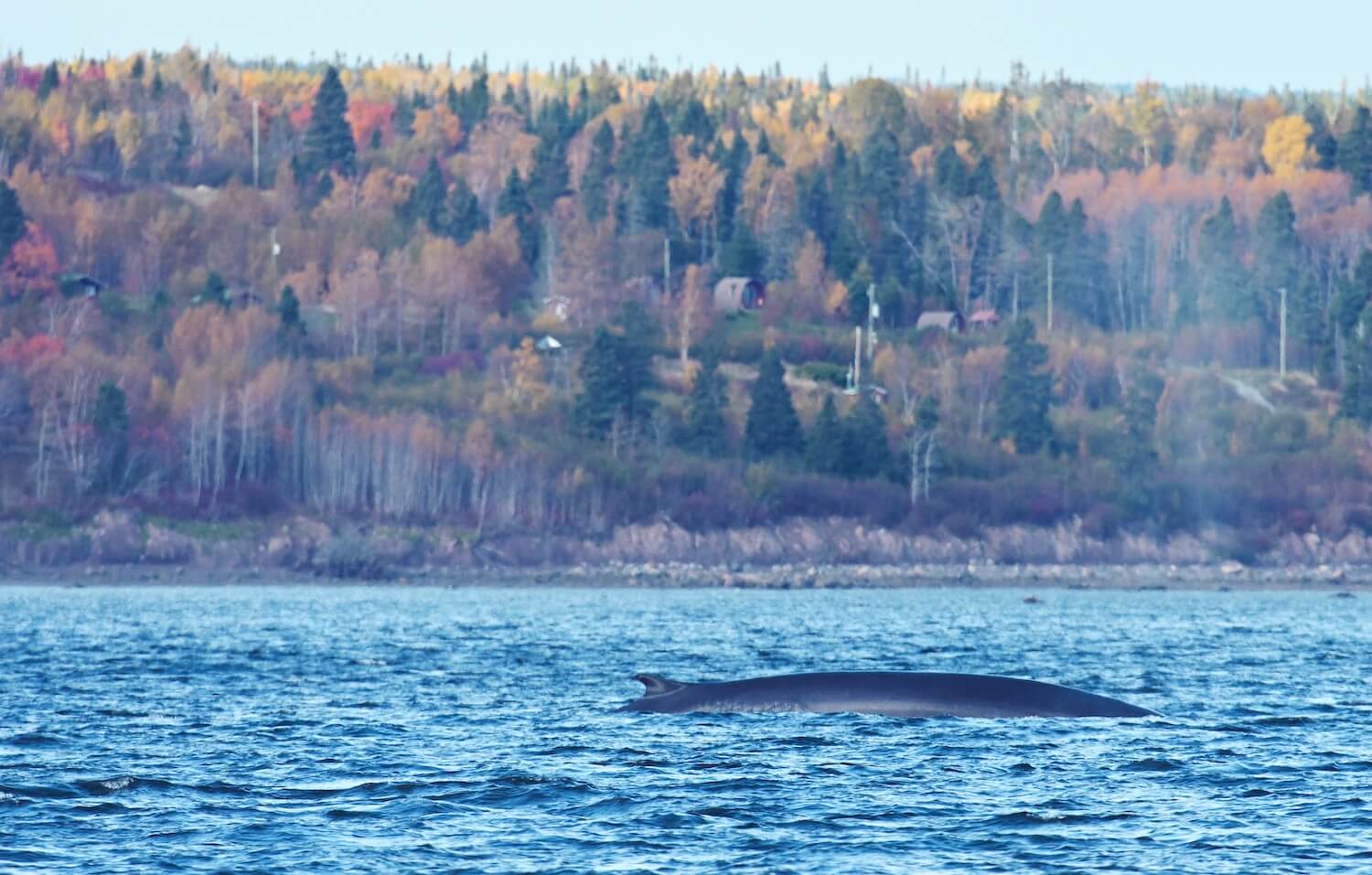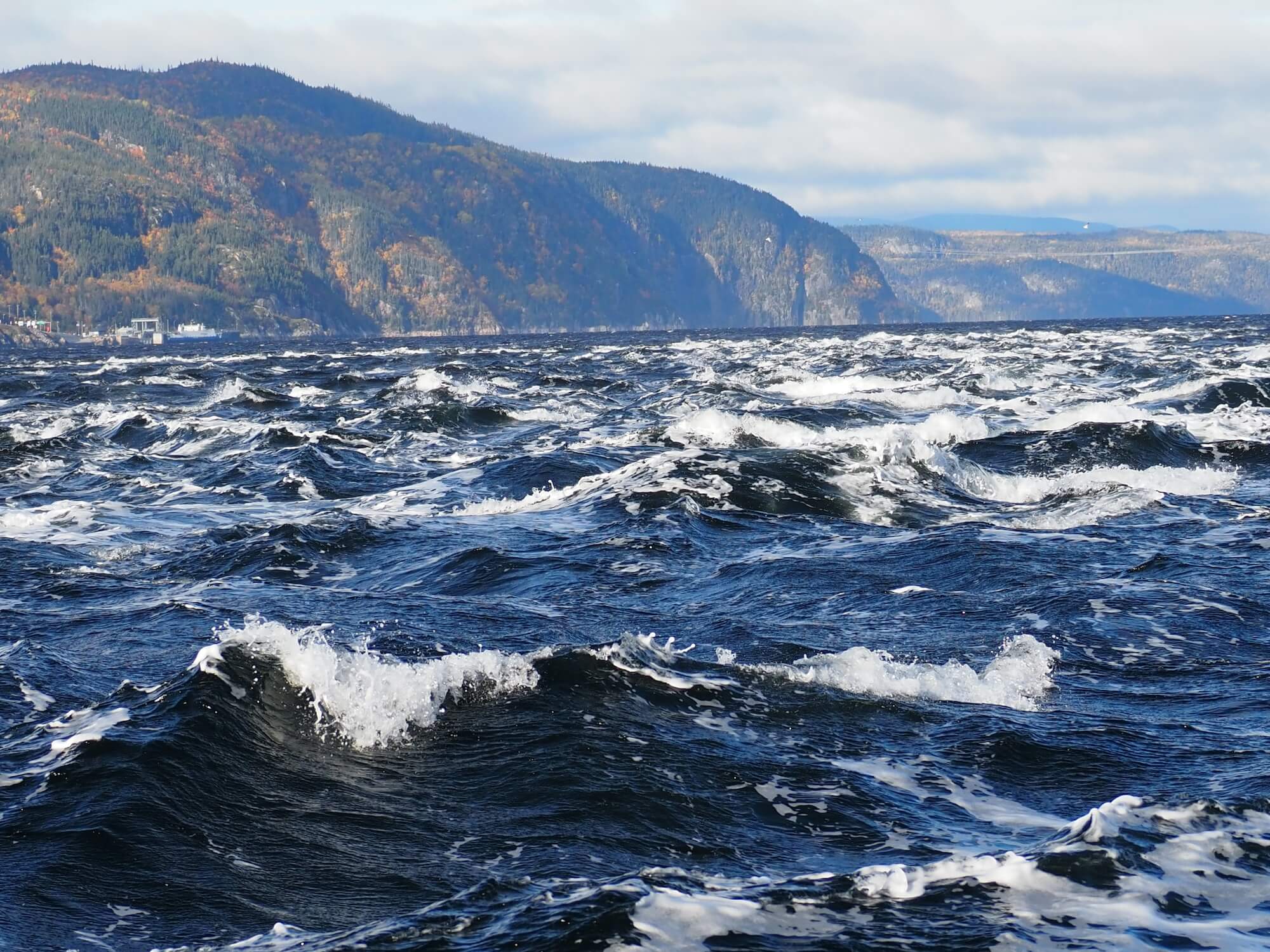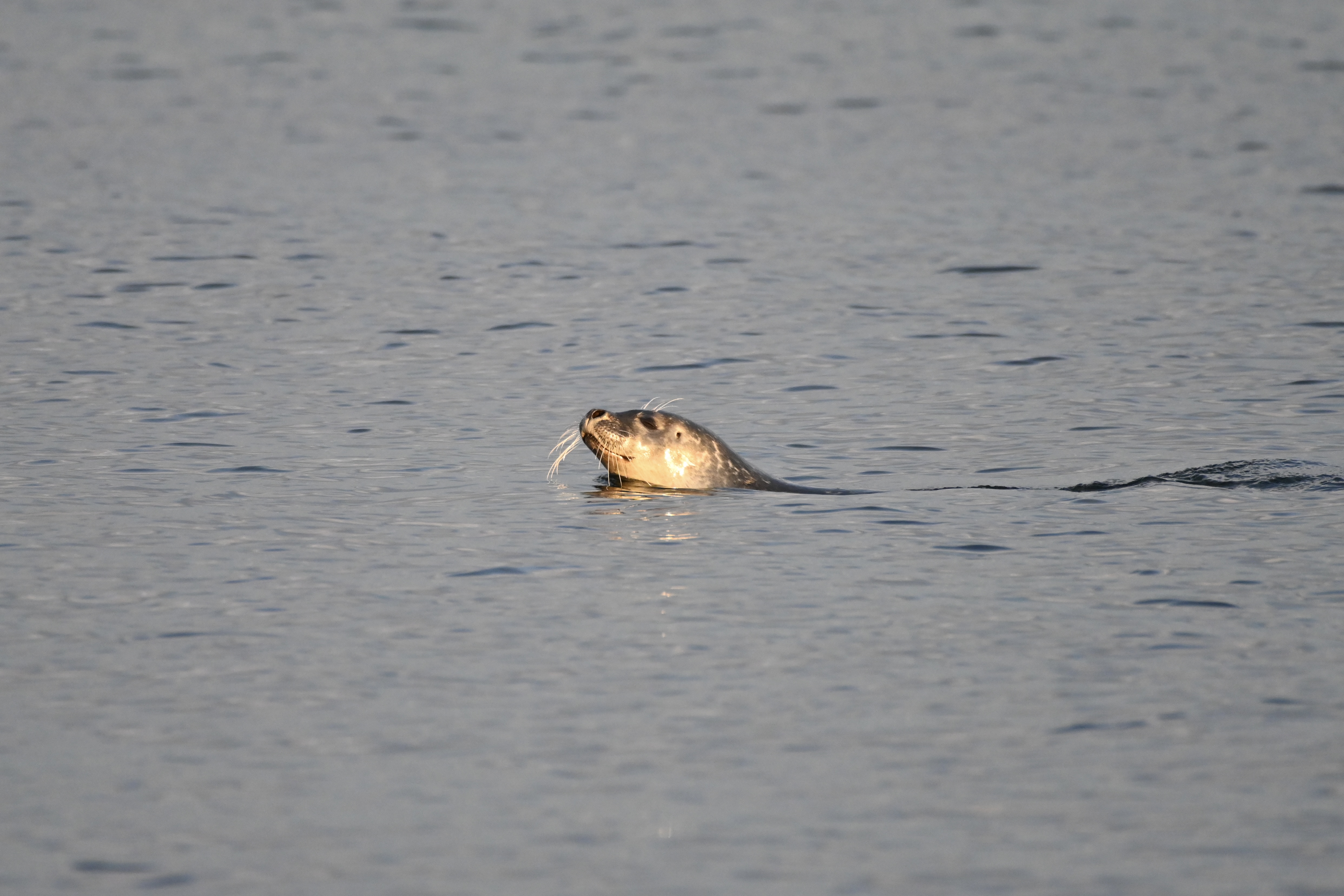The past week was ideal for enjoying the cool weather and those who ventured to the shores of the St. Lawrence enjoyed their share of sightings! In the estuary, several well-known cetaceans wow their observers: the dives of the blue whale Phoenix (B275), the return of the humpback whale Éline (H929) and the presence of the fin whale Zipper (Bp097). In Gaspé Bay, the season seems to be peaking with three blue whales and four humpbacks, with other large spouts sighted farther offshore.
Large rorquals close to shore
There is no shortage of stories about some of the extraordinary sightings that have taken place! The whales seem to have a penchant for the coasts in recent days. Minke whales were surface feeding at the mouth of the Saguenay, their ventral grooves clearly visible, while others were cruising the waters near Baie-Comeau. At dawn, scattered grey seals, harbour seals and harbour porpoises were swimming around Les Escoumins. A harbour seal was resting in the Bay of Sept-Îles. A humpback whale even approached the docks in Saint-Siméon. The sightings just keep on coming!
In Gaspé Bay, a local resident is surprised how abundant marine mammals have been, with humpbacks putting on amazing displays, the broad backs of blue whales near Cap-des-Rosiers, and large blows resonating in the distance, suggesting the presence of other large whales.
For one North Shore resident, last Saturday at the pilot wharf in Les Escoumins produced some of her best sightings of the year, and certainly some of the most varied! There was the blue whale Phoenix showing its tail fin, a fin whale, two humpbacks and even minke whales. “We didn’t even have to move from our spot on the rocks, the whales were pretty much sticking to the same area. It was magical!”
Also reported were the presence of humpback whale H919 and the return of Éline (H929), who had visited the waters of the estuary last spring. The fin whale Zipper was also in the area, easily recognizable by the scar on its right side. Also in Les Escoumins, a faithful whale enthusiast took advantage of a wide viewing angle to admire several species simultaneously: “A fin whale crisscrossing the area at lightning speed, plus a nearby blue whale. A minke whale quickly passed by while the two giants circled around the area. Then a humpback. And another one. And another one for a total of three.”
Big gulps for Phoenix
In the estuary, observers were delighted by the presence of the blue whale Phoenix. In 2018, this female was seen accompanied by a calf (article in French). Her spouts can often be heard near the coast and she regularly shows her caudal fin when she dives.
Did you know that a blue whale’s tongue can weigh as much as an elephant? It is very useful to them when they take their huge gulps of krill. When they open their mouth to let the water in, their tongue is pushed down by the pressure and when they close their mouth again, the tongue returns to its original position and the water is pushed through the baleen, filtering out the food. Compared to other mammals, rorquals’ tongues are less muscular but more elastic, with nerves that can double in length!
Where are the whales this week? Observation map
These data were reported by our network of observers. They give an idea of the presence of whales and in no way represent the actual distribution of whales in the St. Lawrence. Just for fun!
Click on the whale or seal icons to discover the species, the number of individuals, additional information or photos of the sighting. To enlarge the map, click on the icon in the top right-hand corner. The map works well on Chrome and Firefox, but not so well on Safari.
To display the list of sightings, click on the icon in the top left-hand corner.
Thanks to all our collaborators!
Special thanks go out to all our observers who share their love for marine mammals with us! Your encounters with cetaceans and pinnipeds are always a pleasure to read and discover.
On the water or from shore, it is your eyes that give life to this column.
Odélie Brouillette
Thalia Cohen-Bacry
Laetitia Desbordes
Jade-Audrey Lavergne
Élizaneth Mélis
Diane Ostiguy
Renaud Pintiaux
Chloé Pazart
Pascal Pitre
Jean Roy
René Roy
Andréanne Sylvain
Marielle Vanasse
And to all the others!
Additionally, we would like to acknowledge the following teams that also share their sightings:
Sept-Îles Research and Education Centre (CERSI)
Group for Research and Education on Marine Mammals (GREMM)
Marine Mammal Observation Network (MMON)
Quebec Marine Mammal Emergency Response Network (QMMERN)
Mingan Island Cetacean Study (MICS)
Would you also like to share your observations?
Have you seen any marine mammals in the St. Lawrence? Whether it’s a spout offshore or just a couple of seals, drop us a line and send your photos to [email protected]!


